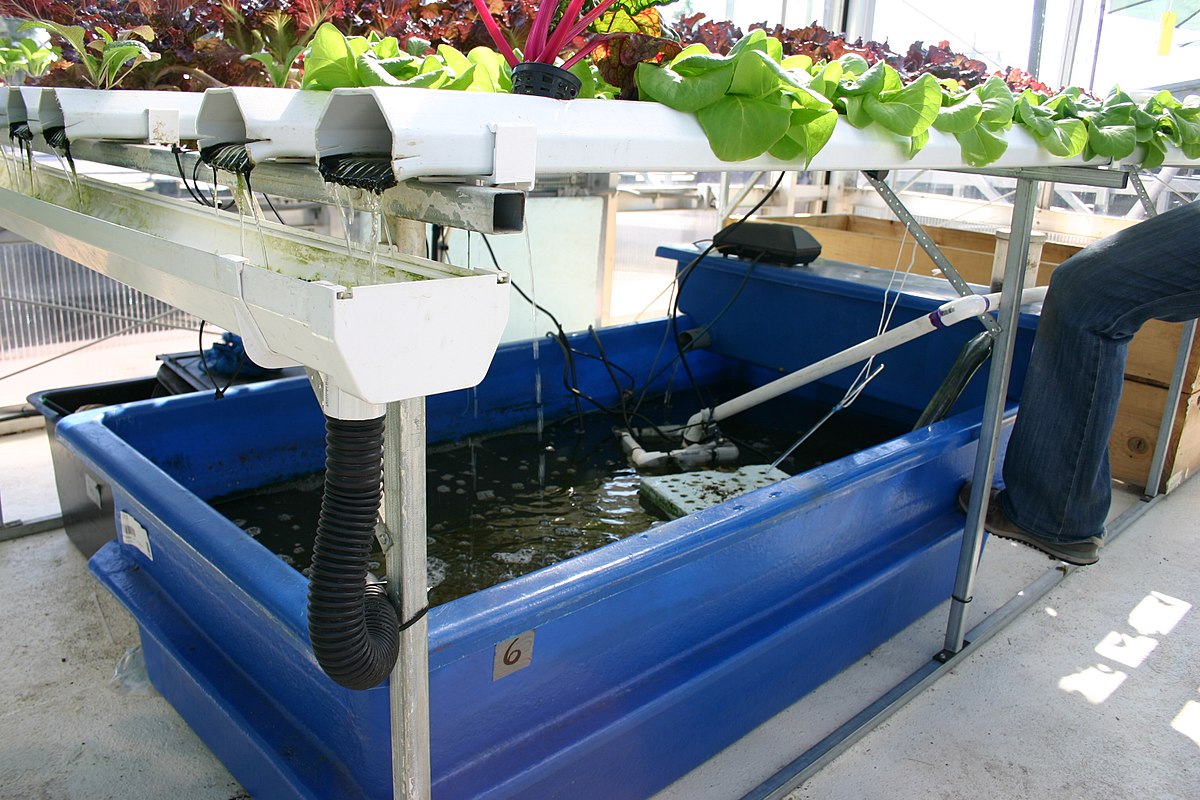Aquaponics relies on a delicate balance between fish, plants, and bacteria. While fish provide waste that becomes nutrients for plants, it’s the beneficial bacteria that make the whole system function. These bacteria convert harmful fish waste (ammonia) into plant-usable nitrates, creating a stable, self-sustaining ecosystem.
But before adding fish, your system must go through a cycling process—the biological establishment of these essential bacteria. This guide will walk you through the importance of cycling, different methods, and tips to ensure a smooth start for your aquaponic system.
What Is Cycling in Aquaponics?
Cycling is the process of building up beneficial bacteria that convert toxic ammonia (from fish waste) into nitrites and then into nitrates—an essential nitrogen cycle for plant growth.
🔄 The Nitrogen Cycle in Aquaponics:
1️⃣ Fish waste releases ammonia (NH₃) – Toxic to fish at high levels.
2️⃣ Nitrosomonas bacteria convert ammonia into nitrites (NO₂⁻) – Also harmful to fish.
3️⃣ Nitrobacter bacteria convert nitrites into nitrates (NO₃⁻) – Safe for fish and a valuable nutrient for plants.
4️⃣ Plants absorb nitrates – Purifying the water for fish, completing the cycle.
Without this bacteria-driven process, ammonia would build up and harm or kill the fish. Cycling ensures your aquaponic system is ready to support life before introducing fish.
Methods for Cycling an Aquaponic System
There are two main ways to cycle your system:
1. Fishless Cycling (Recommended for Beginners 🏆)
This method establishes bacterial colonies before adding fish, reducing stress and fish loss.
Step-by-Step Fishless Cycling:
✅ Step 1: Fill Your System with Water
-
Use dechlorinated water or let tap water sit for 24–48 hours to remove chlorine.
✅ Step 2: Add an Ammonia Source
-
Pure ammonia (household ammonia without additives) – Add 2-4 ppm to the water.
-
Fish food – Sprinkle food in the tank; it will decay and produce ammonia.
-
Organic matter (peeled shrimp, compost) – Decomposes to release ammonia.
✅ Step 3: Introduce Beneficial Bacteria
-
Naturally present in the environment but can be boosted with:
-
Bacteria starters (nitrifying bacteria from aquarium supply stores).
-
Filter media or water from an established system to "seed" the bacteria.
-
✅ Step 4: Monitor Ammonia, Nitrite, and Nitrate Levels Daily
-
Days 1–10: Ammonia will be high (~2–4 ppm).
-
Days 7–14: Nitrites will appear, indicating bacteria are converting ammonia.
-
Days 14–30: Nitrates appear, and nitrites drop to 0 ppm.
-
When nitrates stabilize and ammonia + nitrites are at 0 ppm, the system is fully cycled.
✅ Step 5: Add Fish and Plants
-
Gradually introduce fish only after the cycle is complete.
-
Start with hardy species like tilapia or goldfish.
🔹 Fishless cycling takes 3–6 weeks but ensures a healthier system before adding fish.
2. Cycling with Fish (Riskier Method 🐟)
This method uses live fish from the start to introduce ammonia naturally. It’s riskier since ammonia and nitrite spikes can stress or kill fish if not managed carefully.
Steps for Cycling with Fish:
✅ Step 1: Add Hardy Fish
-
Use tough species like goldfish, tilapia, or koi that can tolerate ammonia fluctuations.
✅ Step 2: Feed Lightly
-
Only small amounts of food to avoid excess ammonia buildup.
✅ Step 3: Monitor Water Quality Daily
-
If ammonia or nitrites exceed 2 ppm, do a partial water change (25%) to prevent fish stress.
✅ Step 4: Add Plants and Boost Bacteria
-
Introduce plants early to absorb excess nitrates.
-
Consider adding a bacteria starter to speed up cycling.
🔹 Cycling with fish can take 4–8 weeks and requires constant monitoring to prevent fish deaths.
How to Speed Up the Cycling Process
⏩ Want to cycle your system faster? Here are some expert tips:
✔️ Use a Bacteria Starter – Pre-packaged nitrifying bacteria can jumpstart the nitrogen cycle.
✔️ Increase Water Temperature – Keeping water at 77–86°F (25–30°C) accelerates bacterial growth.
✔️ Add an Air Pump – Oxygen promotes bacterial colonization.
✔️ Use Established Filter Media – Seeding with filter media or water from an existing system cuts cycling time in half.
✔️ Keep pH Balanced (6.5–7.5) – Extreme pH levels slow bacterial activity.
Common Cycling Problems and Solutions
🚨 High Ammonia Levels (>4 ppm)
🔹 Problem: Too much ammonia delays bacterial colonization and can harm fish.
✅ Solution: Reduce ammonia input, do a 25% water change, and increase aeration.
🚨 Nitrites Stay High for Too Long
🔹 Problem: The second bacterial stage is slow to develop.
✅ Solution: Increase water oxygenation, raise water temperature, and add bacteria starters.
🚨 pH Drops Too Low (<6.5)
🔹 Problem: Acidic conditions slow bacterial activity.
✅ Solution: Add crushed coral, potassium bicarbonate, or calcium carbonate to buffer pH.
🚨 Cycling Takes Too Long (Over 6 Weeks)
🔹 Problem: Lack of bacteria or poor conditions.
✅ Solution: Use established filter media, increase water temperature, and boost aeration.
Final Checklist: When Is Your System Fully Cycled?
✔ Ammonia Levels: 0 ppm
✔ Nitrite Levels: 0 ppm
✔ Nitrate Levels: Present (5–40 ppm)
✔ pH Stable: 6.5–7.5
✔ Water Clear and Odor-Free
Once you hit these markers, your aquaponic system is safe for fish and plants! 🎉
Conclusion: Cycling Is the Foundation of Aquaponics
Cycling is the most important first step in aquaponics, ensuring that your system is biologically ready to support fish and plants long-term. Whether you choose fishless cycling (recommended) or cycling with fish (higher risk), following the right steps prevents problems later and leads to a thriving aquaponic ecosystem.
Ready to start cycling your aquaponic system? Let us know your questions and experiences in the comments below! Happy farming!

Comments
No comments yet. Be the first to comment!
You must be logged in to comment. Login